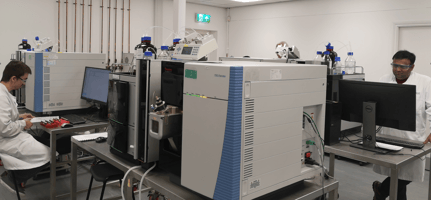The 2024 GTNF Conference kicked off with impactful discussions on how to innovate in a tightly regulated environment. Led by Valerie Briggs Solomon and supported by panellists such as Lillian Ortega,...
Tobacco Products Directive: European Commission reports published

Jul 21, 2016 | Published by Chris Allen
We have just announced via email to our followers regarding further clarification from the MHRA. Subsequent guidance has been provided by the European Commission regarding the common notification format for the submission of data for the TPD. As with any regulatory process there is always further interpretation required but this information is certainly welcomed and provides more in-depth guidance.
There is a significant amount of information relating to the measurement of emissions and nicotine dose, an area which has caused concern with many. The information detailed in this publication is very much in line with the testing Broughton has been performing since last year, and therefore provides our clients with peace of mind that the testing performed to date can be used with confidence when submitting their products. A summary of some of the key points is provided below:
Emissions Testing
“Emission testing, for the case of e-cigarettes and their refill mechanisms, would be a source of significant cost, which would be substantially lower if performed as part of a liquid analysis. Hence potential emission constituents that could be evaluated as non-existent in the e-liquid may be measured only in liquid form. However so as to protect consumer and public health, emissions which may have an impact on health, must be measured for each product on the EU Market”.
“E-cigarette liquids and products should be tested not on theoretical testbeds or with test bed liquids, but with real market products. With regards to the emissions to be tested for e-cigarettes EUREST proposes that those constituents which can be tested for in the liquid phase, should be tested as such as the absence of these substances (i.e. TSNAs, ethylene glycol, diethylene glycol, diacetyl, acetyl propionyl) in the liquid would mean that they would not be identifiable in the emissions. Emission testing in this case would include testing for formaldehyde, acetylaldehyde, acrolein, heavy and trace metals and total aerosol production. These emissions of ecigarettes and their refill liquids have the highest relevance to public health via direct or passive exposure to e-cigarette vapour”.
This is great news for the industry as it allows a pragmatic approach for emissions analysis and reduces the potential testing required. It does however highlight that it’s expected that ‘each’ product on the market must be tested. Unfortunately this does bring into question the feasibility of employing matrix or bracketing approaches to testing and certainly demonstrates that emissions cannot be calculated on a ‘theoretical’ basis. Broughton have developed platform methods for the determination of the compounds outlined here and utilise highly specific techniques such as LCMS to overcome the potential interference from the product flavourings.

